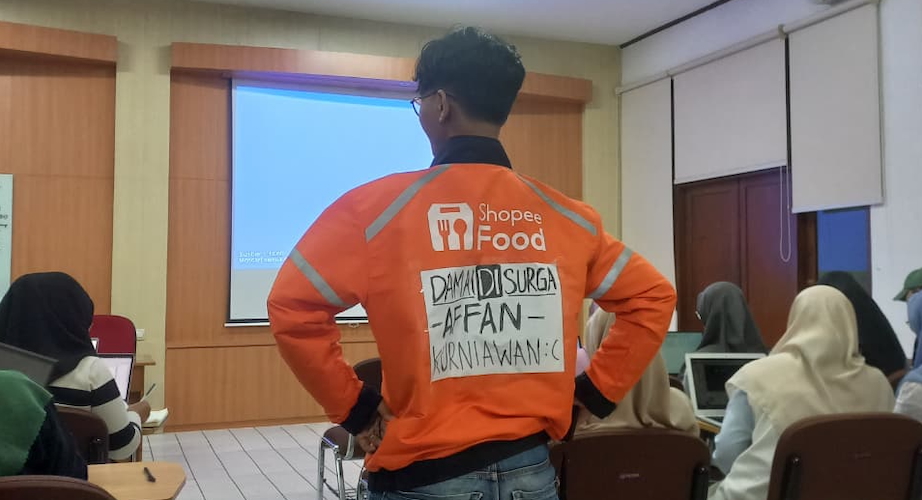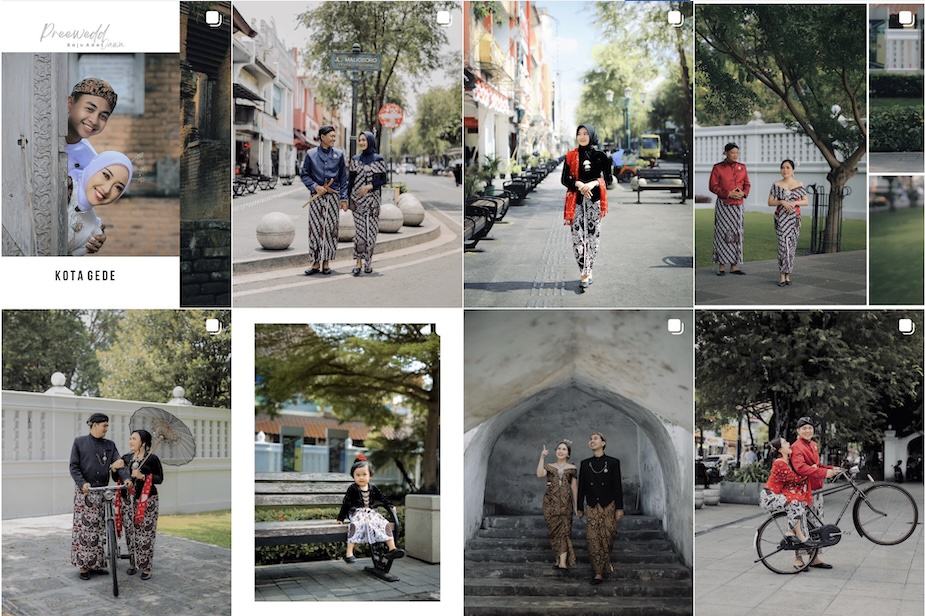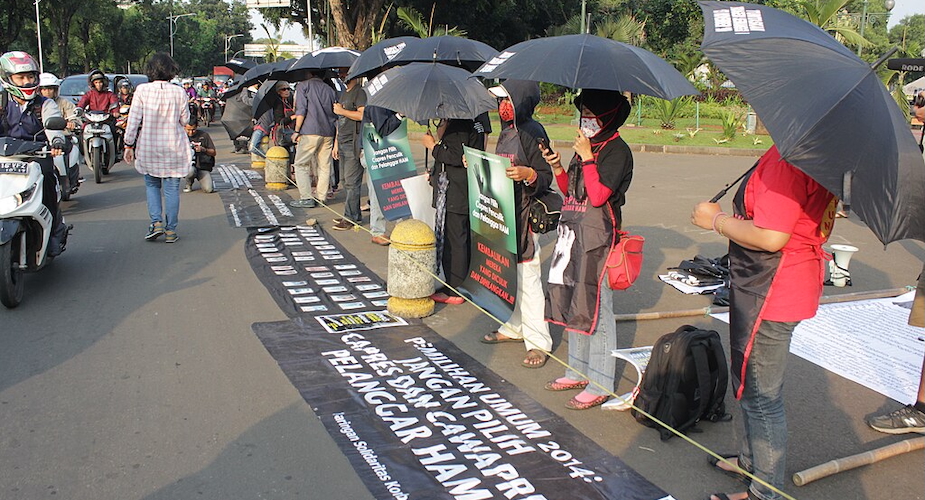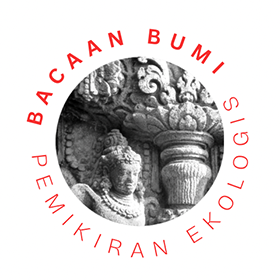My first encounter - albeit imaginary - with a victim of human rights violations occurred in the seventh grade. The victim's name was Widji Thukul. I got to know him well through devoutly reading his biography and works, which at times was quite a spiritual journey.
From the life story of this thin and poetry-skilled man, I discovered traces of state violence against Thukuls like Tan Malaka, Heri Hertanto, Yap Yun Hap, and thousands of other nameless victims. As a thirteen-year-old, I was able to identify the patterns of state violence that were always hidden behind the thick curtain of formal history and civics education.
Throughout my compulsory education, state violence against civilians was not mentioned in even a single chapter, paragraph or word. That became a systematic error of the state that attempted to hide the historical wounds of the past. Not only did they fail to reveal these events, but they also never apologised for them, which until now has never happened. The civics subject, specifically, could be summed up in seven words: right or wrong, it’s my country.
Armed with those five words, my friends were compelled to justify any actions of the state, even when they were morally wrong.
The 1965-1966 massacre of communists and suspected communists? Correct. The 1998 arrest of pro-democracy activists? Nothing wrong. The shooting of students? Absolutely right. The basis of this justification? For the sake of stability, which often meant victims were dismissed as troublemakers or agitators who disturbed public peace. As a consequence, my peers, who were indoctrinated by these two subjects, had a distorted understanding of history.
The understanding of history that grows among the public is actually a legitimate version of history according to the state. In other words, history has been tainted by the state’s loud propaganda. And unfortunately, this has affected not only my friends, but almost all of my peers across the country. I believe that historical amnesia has already taken place for this Republic.
Extend another 18 years?
However, the disaster that I thought would come might be delayed for another 100 years. Civil society has made many attempts to prevent this danger, from small-scale projects to large-scale movements. Among these, I would like to highlight the Aksi Kamisan, which is one of many such efforts. I was just three years old when the Aksi Kamisan started in 2007. I was too young to understand what they were all about. It wasn't until I got older that I realised what they were fighting for. Here’s what I now know.
Indonesia is a country that is never finished with its past. The wounds of the 1965-66 massacre are left open and various human rights violations during the New Order regime are also treated the same. The same thing also happened to military repression in Papua, Aceh, and East Timor. The New Order left deep wounds on the victims and their subsequent generations.
Post-New Order Indonesia had to bear all the wounds inflicted by the previous regime. Although the Reformasi era produced Law No. 26/2000 on Human Rights Courts, it was truly ineffective. The limitations of the law are seen from the limitations of the authority of the National Human Rights Commission (Komnas HAM) as merely an investigator.
Komnas HAM is limited to conducting investigations and forwarding its findings to the Attorney General's Office (Kejaksaan Agung) for further action. Frequently, the two institutions hold differing interpretations of what constitutes ‘sufficient initial evidence’. As a result, the investigation files are shuffled between the Kejaksaan Agung and Komnas HAM, with little progress. Consequently, these constraints have prevented the country from effectively addressing cases of gross human rights violations.
This has led to a culture of impunity, where past human rights abuses have gone unpunished. The government's most significant response has been a public apology in 2022, which fell short of providing victims with the justice they deserve through judicial processes.
The violence that was allowed to continue and the increasing impunity after the New Order were the two embryos from which the Aksi Kamisan emerged. Civilians have been standing in front of the State Palace in Jakarta, every Thursday afternoon since January 18, 2007. For me, the Aksi Kamisan is the most natural reaction from civil society that craves justice which has long been taken away by the state.
Now, the Aksi Kamisan has reached the age of 18. Perhaps that age is too young when attached to the old age of the Indonesian state, which continues to ignore human rights violations. For me, 18 years, since 18 January 2007 has been a long enough time to make the state aware of the need to quickly resolve human rights violations. But it feels like the state considers 18 years to be just a blink of an eye because of the weapon of impunity it possesses.
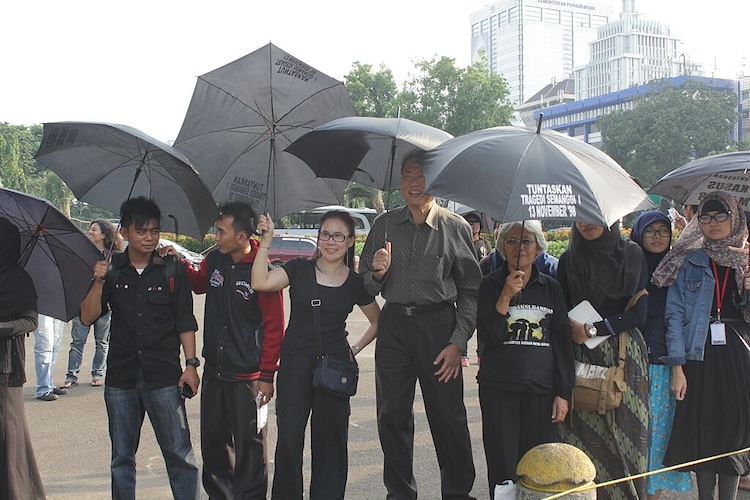
I am a person who hopes that the Aksi Kamisan will die young quickly. No more people standing in front of the State Palace every Thursday afternoon. No more elderly people enduring the pain of standing there for a long time. But all desires seem to rely on the hope of impossibility. This was further confirmed on the day when I woke up, watched television, and suddenly saw Prabowo as President - a human rights violator - appear on my screen. ‘There is no hope. It [Aksi Kamisan] has to extend another 18 years, right?’ my friend said at that time.
A simple act of resistance
What is so special about the Aksi Kamisan that it can delay this historical amnesia disaster? In fact, the Aksi Kamisan is merely a collective movement that relies on silent standing. It doesn't offer a big stage for demonstrators to give long speeches or recite poems. Nor does it have a large mass base every Thursday afternoon when the action is held. Each demonstrator only wears a simple black t-shirt and holds a black umbrella. Meaning, there's nothing special about the organisation of the Aksi Kamisan. If you want to praise the Aksi Kamisan hyperbolically, you can't - it's all very simple.
Despite its simple organisation, the Aksi Kamisan wields an incredibly powerful influence. I have been subject to its immense force.
Once, I went to the Aksi Kamisan in Yogyakarta. Standing silently, holding a propaganda banner. The other demonstrators were also as silent as I was. I witnessed a variety of facial expressions. There were various emotions that appeared: melancholy, seriousness, calmness, anxiety, hope, fatigue and countless others. These expressions seemed to freeze in space and time for a while.
Despite their continuous silence and standing, they are actually loudly demanding that the state be held accountable. They force us to open our eyes, sharpen our ears and, of course, uncover the state's past abuses so that we don't easily forget the various human rights abuses that the state has orchestrated.
I can only gather the strength to ponder and imagine the faces of the victims of human rights violations, the families they leave behind and what is left of them. Truly terrible.
The danger spreads when people start to forget who Munir is and why he was killed. Munir, as portrayed in Matt Easton’s book We Have Tired of Violence, was an ordinary man who worked as a lawyer at the Malang Legal Aid Institute. His humanitarian work focused on legal advocacy to resolve cases of enforced disappearances in the post-Suharto era. He was poisoned while on a flight to Utrecht University, with a planned thesis topic also centred on enforced disappearances.
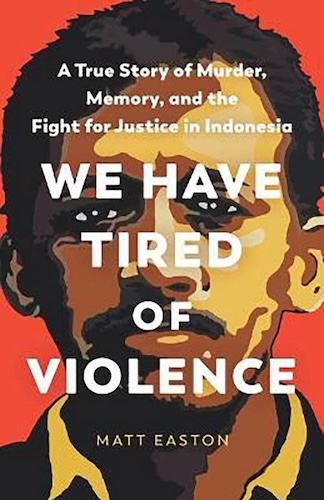
The state is responsible for Munir's death. This is proven by the dragging i of one key witness, Deputy V of the National Intelligence Agency, Muchdi PR. The failure of legal reform post-Suharto and the growing impunity made the prosecutor's argument incompetent, important witnesses even absent, leading to Muchdi PR being acquitted of all charges in January 2009.
Aksi Kamisan offers itself as an anti-forgetting medicine. When people forget who should be held accountable for Munir's death, Aksi Kamisan tries to remind them. When people easily forget what happened to the Chinese people in 1998, Aksi Kamisan reminds them. Similarly, it happens when we see Ibu Sumarsih, one of the founders and leading actors of the Kamisan movement. Seeing her standing every Thursday in front of the State Palace for 18 years makes us remember the late Wawan, her son, who was a victim of the Semanggi I Tragedy.
Aksi Kamisan with its simplicity becomes a reminder of the Semanggi I Tragedy which shows the brutality of the military apparatus, bringing to mind the cruelty of the New Order of Soeharto which marginalised human rights matters. Not only applicable to Ibu Sumarsih, but Aksi Kamisan also reminds us of Ibu Sumarsih and others who, even as this essay is written are still seeking justice for sons and daughters who were killed or missing.
The simplicity of the Aksi Kamisan organisation perhaps also hides a power. By standing in silence, the demonstrators of the Aksi Kamisan are able to deeply reflect on all forms of violence and human rights abuses. This silence is, paradoxically, the most resounding protest, designed to force the state to acknowledge and take responsibility for these tragic events. The black shirt that sticks to the bodies of the demonstrators symbolises resistance against historical amnesia.
The same face for 60 years
Aksi Kamisan not only evokes deep empathy for the victims, but also shows us who is responsible for these human rights violations: the state.
Our country has not moved from its original point for 60 years. Patterns of human rights abuses against civilians carried out by the New Order have been repeated during the Reformasi era, particularly under the Jokowi and Prabowo regimes. The most prominent aspect is the emergence of a culture of forgetfulness, which the regime attempts to structurally solidify by treating human rights violations as a legacy of the past. It is a state mechanism to avoid responsibility for its actions. However, Aksi Kamisan stands against all of that. Aksi Kamisan, as a child of Reformasi, stood in opposition, demanding accountability from regimes across different phases of Reformasi for decades.
It seems as if the state's position has always been the same regarding human rights violations. The shooting of a student named Gamma by the police, violence against women and corruption in the new regime are all issues raised by Aksi Kamisan. Simply put, Aksi Kamisan reminds people who are starting to forget about corruption and the late Gamma Rizkynata Oktafandy. Again, it not only demands accountability from the state but also acts like water that breaks the wall of forgetfulness.
Alvino Kusumabrata (alvinokusumabrata2017@gmail.com) is a research fellow at Center for Law and Social Justice (LSJ) in the Faculty of Law, Universitas Gadjah Mada, Yogyakarta, and a writer whose work has appeared in publications including Prisma, IndoProgress, and Tirto.




